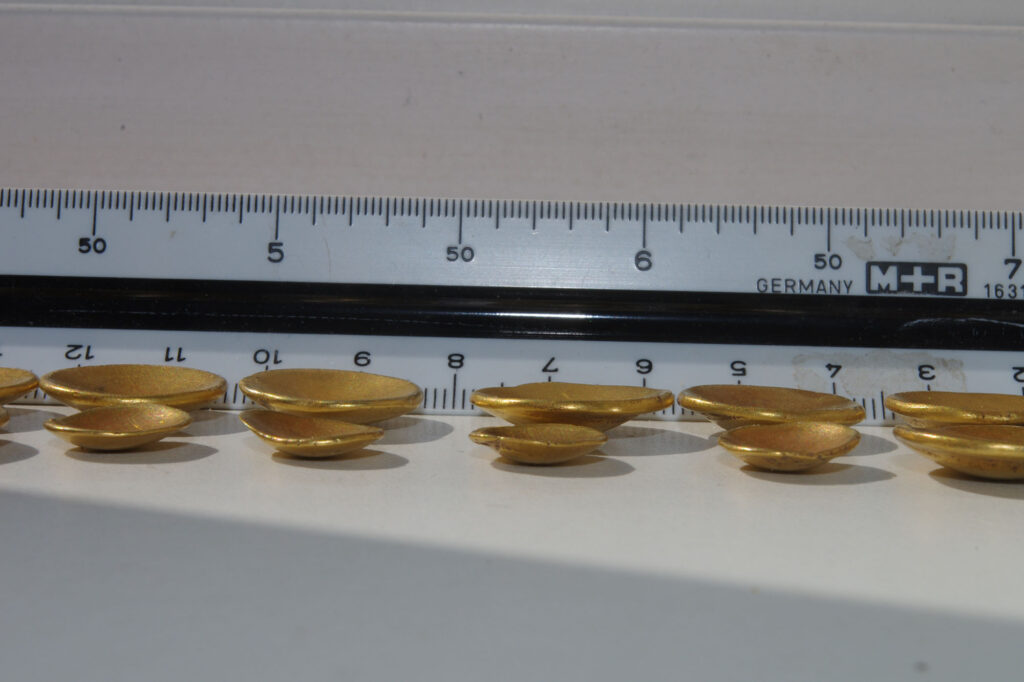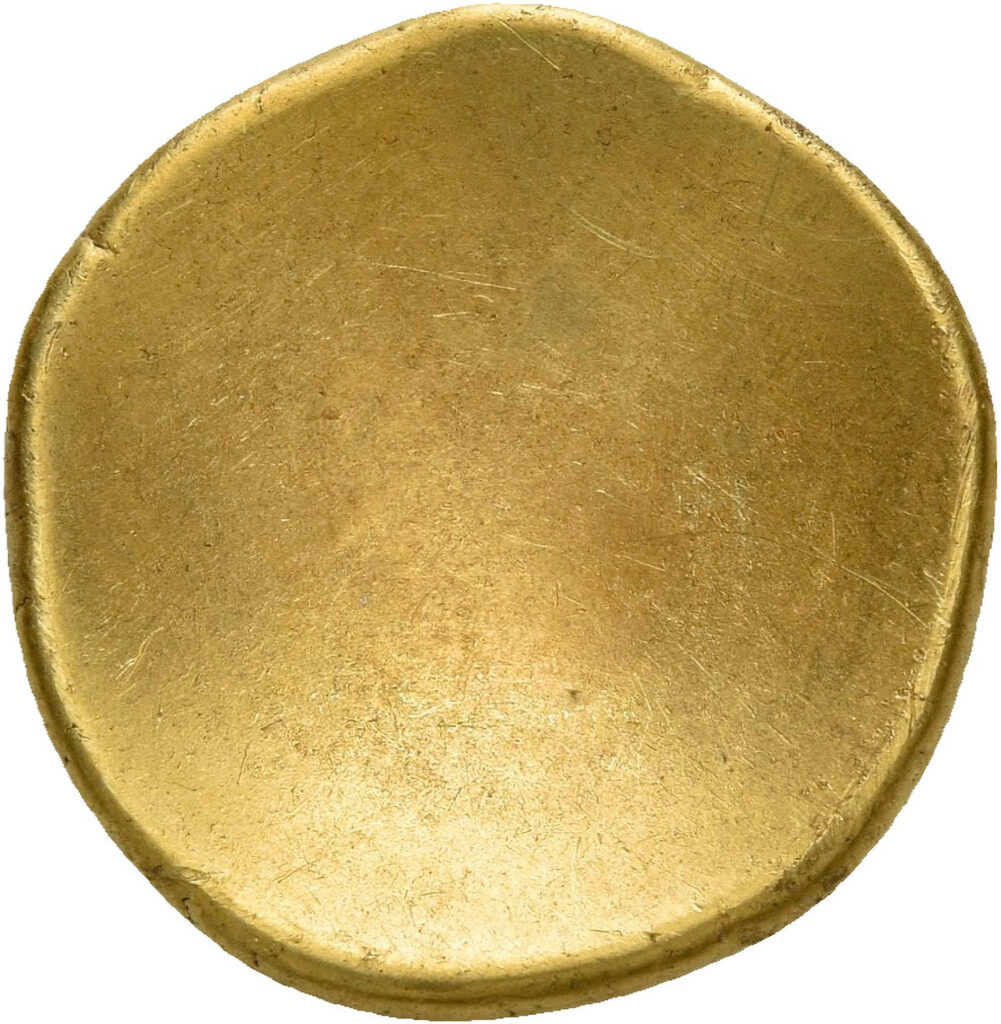This 2,000-year-old hoard of Celtic gold coins called “rainbow cups” in reference to the legendary pot of gold at the end of the rainbow has been unearthed in Germany.
The coins were found by an amateur archaeologist, who has dubbed the discovery a “once-in-a-lifetime” find.
Amateur archaeologist Wolfang Herkt, a volunteer with the Brandenburg State Heritage Management and Archaeological State Museum (BLDAM) in north-eastern Germany, discovered 10 coins at first before a further 31 coins were discovered near the village of Baitz in the Potsdam-Mittelmark district of the state of Brandenburg in 2017, with the results of the find being published now.

The coins, which are all slightly curved, are called “rainbow cups”, which is in reference to the popular legend of a pot of gold being at the end of a rainbow, according to numismatist (coin expert) Marjanko Pilekic of Goethe University.
Curved gold coins such as these were often found in fields, leading locals to believe that they could be found wherever a rainbow and the ground would meet and that they possessed supernatural powers and brought the finder luck.
The amateur archaeologist who made the initial discovery, Herkt, said: “This is an exceptional find that you probably only make once in a lifetime. It is a good feeling to be able to contribute to research into the history of the country with such a find.”
The publication of the findings was the perfect opportunity for Manja Schuele, the Minister of Culture for Brandenburg, to reveal that the discovery is the largest in Brandenburg’s history.

She made the comments in the Brandenburg state capital, Potsdam, in the company of state archaeologist Professor Franz Schopper, as well as Pilekic and Herkt.
Schuele said: “There has never been a gold treasure from the Celts in Brandenburg. The 41 gold coins that have now been discovered are a sensation, an irreplaceable source of information and offer a unique glimpse into our past.
“It was a volunteer archaeologist who literally uncovered this important piece of state history.”
She added: “The find shows once again that there are significant historical traces in the state of Brandenburg. And that it is the BLDAM archaeologists who – whether they are volunteers or employed – safeguard our historical and cultural heritage.”
The results of the discovery have been published in the academic journal Live Science with the title ‘2,000-year-old Celtic hoard of gold “rainbow cups” discovered in Germany’.

Detail shot of one of the ‘rainbow bowls’ found in Brandenburg. (M. Pilekic/Newsflash) 
Detail shot of one of the ‘rainbow bowls’ found in Brandenburg. (M. Pilekic/Newsflash) 
Detail shot of one of the ‘rainbow bowls’ found in Brandenburg. (M. Pilekic/Newsflash)
To find out more about the author, editor or agency that supplied this story – please click below.
Story By: Joseph Golder, Sub-Editor: William McGee, Agency: Newsflash
The Ananova page is created by and dedicated to professional, independent freelance journalists. It is a place for us to showcase our work. When our news is sold to our media partners, we will include the link here.




